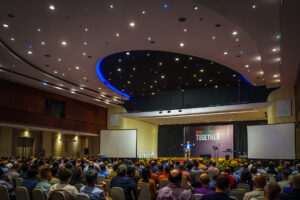
WASHINGTON (BP)–A federal judge dismissed a legal challenge to government funding of embryonic stem cell research July 27, dealing an unsurprising setback to opponents of the lethal experimentation.
Royce Lamberth, chief judge of the District of Columbia District Court, ruled in the Obama administration’s favor less than a year after suspending federal funding of embryonic stem cell research (ESCR). Lamberth’s latest decision came after the D.C. Circuit Court of Appeals removed his preliminary injunction on such grants.
In his new opinion, Lamberth said the appeals court’s April decision “constrains this Court,” forcing him to dismiss the lawsuit.
The case involved a challenge to President Obama’s 2009 executive order that overturned a more restrictive funding policy under President Bush. Obama ordered the National Institutes of Health (NIH) to devise guidelines consistent with his decree.
In August of last year, Lamberth found the NIH guidelines violated a law that prohibits federal funds for research in which a human embryo is destroyed. The ability of stem cells to convert to other cells and tissues has provided great hope for developing cures for various diseases, but extracting stem cells from an embryo results in the destruction of the days-old human being.
In September, an appeals court panel of three judges lifted Lamberth’s suspension of ESCR funding while the case went forward. In a 2-1 decision in April, the panel returned the case to Lamberth but virtually killed the challenge.
Foes of federal funds for ESCR were disappointed but not shocked.
“It’s not Lamberth’s fault, but once again, the Clintonesque public policy expediency technique is used to get around the law through the playing of semantics games,” bioethics specialist Wesley Smith said on his blog. “I wish I were surprised, but I predicted this very outcome late last year. The politics of this were always too white hot in our increasingly less principled country to permit a literal following of the clear purpose” of the law in question.
The Alliance Defense Fund (ADF), which helped represent non-embryonic stem cell researchers who brought the suit, said its lawyers and others are weighing their options for an appeal.
“Americans should not be forced to pay for experiments that destroy human life, have produced no real-world treatments, and violate federal law,” ADF senior counsel Steven Aden said n a written statement. “In these tough economic times, it makes no sense for the federal government to use taxpayer money for this illegal and unethical purpose.”
The initial disagreement between Lamberth and the appeals court stemmed from the Obama administration’s policy in light of an annual, spending bill rider known as the Dickey-Wicker Amendment. First approved in 1996, Dickey-Wicker says federal funds are not to be used for “research in which a human embryo or embryos are destroyed, discarded, or knowingly subjected to risk of injury or death greater than that allowed for research on fetuses in utero” under a related law.
In his 2010 ruling, Lamberth rejected arguments by lawyers for the Obama administration that Dickey-Wicker is ambiguous and permits federal funding for research on stem cells after they have been removed from embryos.
The appeals court, however, agreed in its April opinion that Dickey-Wicker is ambiguous, saying although the law “bars funding for the destructive act of deriving an [embryonic stem cell] from an embryo, it does not prohibit funding a research project in which an [embryonic stem cell] will be used.” The word “research” is “flexible enough to describe either a discrete project or an extended process,” the panel said.
The appeals court’s determination that the word “research” in the law “is ambiguous binds” him, Lambert wrote in his 38-page opinion issued July 27.
Obama’s March 2009 executive order overturned a prohibition instituted by Bush on federal funding of stem cell research that results in the destruction of embryos. Bush’s 2001 order permitted, however, grants for experiments on stem cell lines, or colonies, already in existence at the time of his action.
NIH’s final guidelines, issued in July 2009, allowed funding for research on stem cells derived from embryos created by in vitro fertilization but not implanted. The embryos had to be donated by the parents who underwent the fertility treatments.
ESCR has fallen short of other forms of stem cell experimentation that do not harm the donor. It has yet to provide any treatments for human beings and has been plagued by tumors in lab animals.
Meanwhile, research with adult stem cells and induced pluripotent stem (iPS) cells has produced therapies for more than 70 afflictions and demonstrated promising results, respectively, without injuring donors.
The Dickey-Wicker Amendment, a part of the Department of Health and Human Services’ yearly spending bill, is named after its lead sponsors, former Republican Reps. Jay Dickey of Arkansas and Roger Wicker of Mississippi. Wicker is now a member of the Senate
The case is Sherley v. Sebelius.
–30–
Tom Strode is the Washington bureau chief for Baptist Press.
















